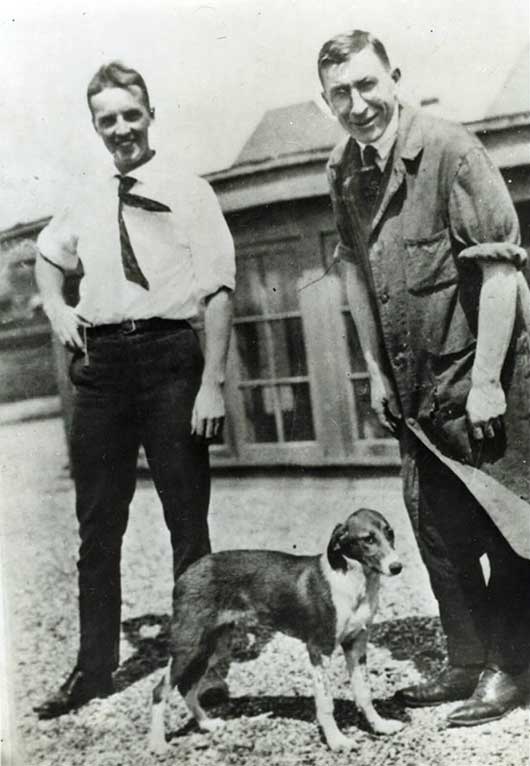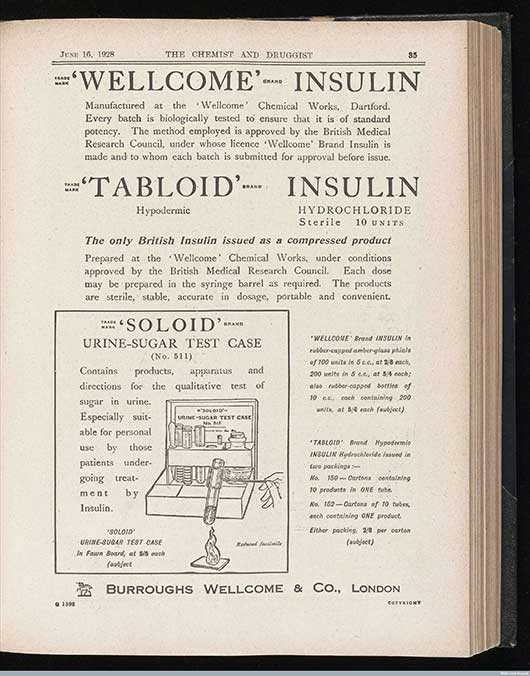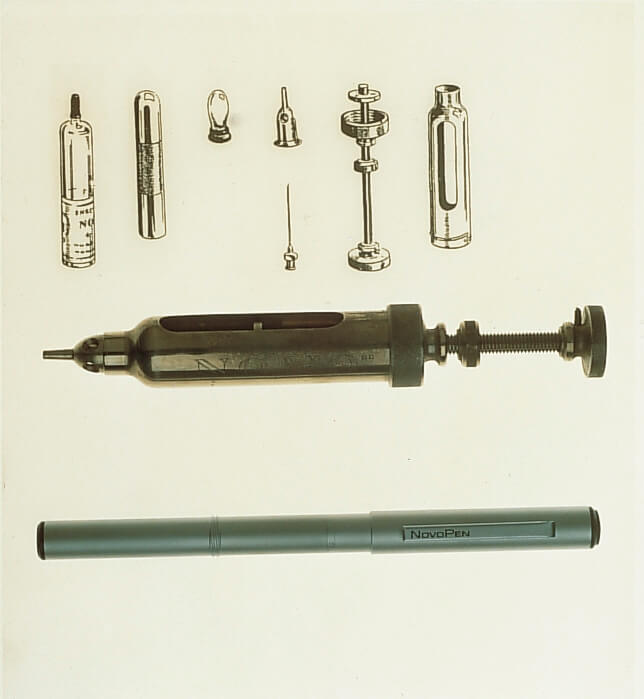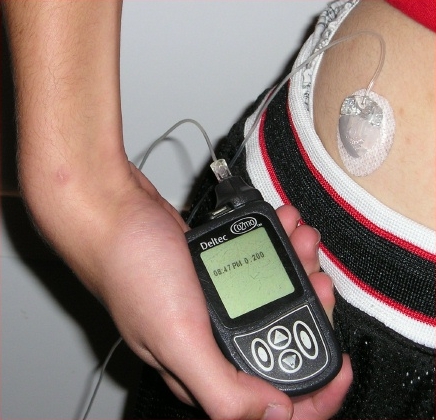This topic takes on average 55 minutes to read.
There are a number of interactive features in this resource:
 History
History
 Biology
Biology
In 1922, the Canadian physiologists Fred Banting and Charles Best announced to the world that they had discovered Insulin and successfully used it to treat diabetes in a human patient. Until then, depending on the type of diabetes the person was suffering with, the patient would experience different serious symptoms. Ultimately, without treatment, a severe lack of insulin would lead to brain dysfunction, coma and death.
Diabetes mellitus had been known since ancient times. Egyptian writings from as early as 1500BC described a wasting disease in which the sufferer produced sweet-tasting urine. From the 1850's onwards, autopsies of people who had died from diabetes suggested that the problem was caused when the pancreas did not function properly. Many physicians speculated that specialised cells, called the islets of Langerhans, produced a chemical that allowed the body to regulate its blood sugar level. Diabetes was caused when this chemical was not produced.
Banting and Best worked in the University of Toronto. They removed the pancreas from dogs which then developed diabetes. Their experiments may seem cruel today but without them, insulin would never have been found as the treatment for diabetes.
New methods of testing blood sugar levels allowed Banting and Best to accurately determine the effects of their treatments. They struggled to purify the chemical hormone produced by the pancreas and extracted many compounds from the islets of Langerhans. These were injected into the diabetic dogs to try and find the hormone that would reverse their diabetes.

Fred Banting (right) and Charles Best (left) with one of their diabetic dogs

An early advert for insulin from 1928
Initially the injections were very impure and often had fatal side-effects. A team of researchers were recruited and eventually they were able to make an extract from the islets of Langerhans that was pure enough to try on a human patient. In May 1922, fourteen-year-old Leonard Thompson was successfully treated in Toronto Hospital with the extract that they called insulin. In 1928, Oskar Wintersteiner proved that insulin was a protein.
We now know that insulin allows the cells of the body to take in sugar from a digested meal. The liver is especially important in the process of regulating the body's blood sugar level. Insulin enables the liver to take in sugar (glucose) after a meal and store it as glycogen. This is used later to return glucose to the blood when blood sugar levels begin to fall.
You can find out more about insulin in Hormones and their effects.
News of Banting and Best's success spread quickly and soon their laboratory was unable to meet the demand for the new wonder drug.
Commercial preparation of insulin began by extracting it from the pancreas of slaughtered cows and pigs. Early insulins were injected three or four times a day, just before each meal. More long-acting insulins were developed so that the need to inject so often was reduced.
In 1955 the Nobel Prize-winner Frederick Sanger found the amino acid sequence of human insulin. This allowed a human insulin gene to be made which was then used to genetically engineer bacteria that could produce large amounts of highly pure human insulin. This is now the main type of insulin available, both short and long-acting versions are used. In 2016 there were 3.6 million people in the UK with diabetes. 10% of these have Type 1 diabetes where the body produces little or no insulin; Type 2 diabetes is much more common; in this type of diabetes the body does not produce enough insulin or body cells do not respond to the insulin produced.
You can learn more about what causes diabetes in our Diabetes topic.

An old syringe and modern pen device for injecting insulin

Today a regular supply of insulin can be delivered throughout the day using a pump